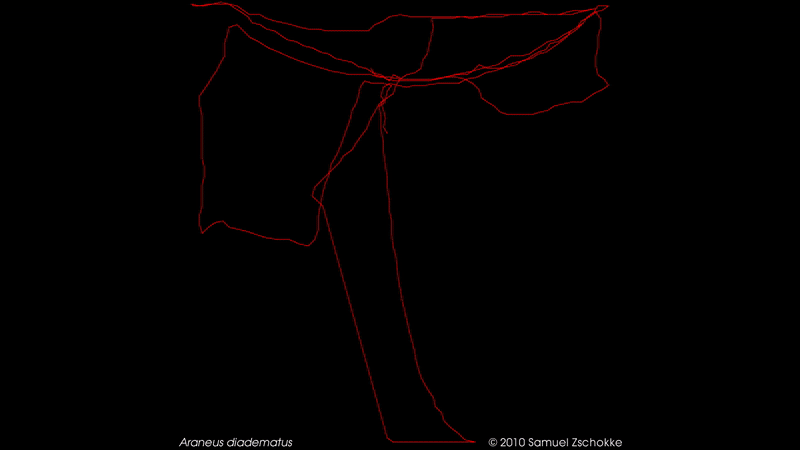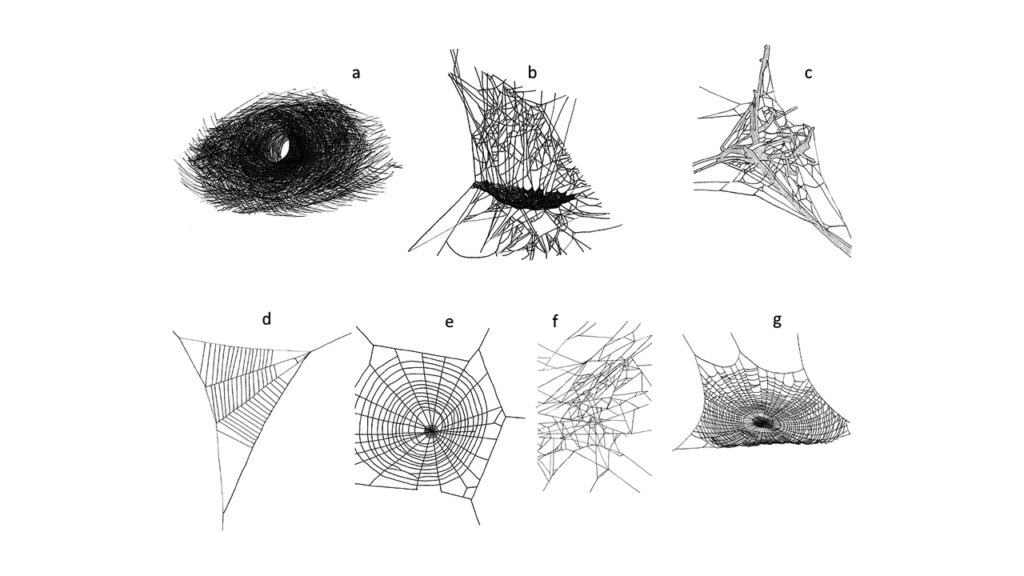
Interesting question! I guess we don’t really think about it all that much, spiders use silk all the time, it’s just part and parcel of being a spider, right? Let’s answer that question though, do spiders run out of web or do they have a never-ending supply?
Believe it or not, it is possible for spiders to run out of web. However, it’s not that often due to the glands that make the silk inside of their bodies. In fact, scientist now believe that the spinnerets that are located at the back of the abdomen are adapted limbs that have evolved over millions of years
I know. I can hear you asking HOW do they run out? And what glands? It’s ok, I’m going to break it down for you, so keep reading!
Protein
Silk is the reaction of proteins. Basically speaking, there is a chemical reaction going on at the back end of the spider that literally spins silk on demand.
As we know, a spider will spin a web to catch prey. And prey means protein. Once that prey has been caught in the web, there’s no escape.
The spider will wander over and inject its venom to paralyze and kill it, together with digestive juices.
However, the venom doesn’t kill the prey immediately. It paralyzes and keeps it fresh, allowing time for the digestive juices to liquify its internal organs.
The spider will then suck it up through its chelicerae (mouth) and in doing so will get its protein fix.
Because most prey items have an exoskeleton, the exterior shell, or husk, will be left behind ensuring the spider gets all of the protein and nutrients it needs.
The spider will absorb all these proteins which will go to the back end of the arachnid, enabling it to make more web.
Eating Their Own Web
Now I know what you’re thinking. What if a spider doesn’t catch any prey? Surely it will run out of web?
Well, spiders have adapted themselves to be able to eat their own web. After all, it’s purely protein to them so won’t do them any harm but will give them a boost to create more web as necessary.
How do Spiders Make Webs?
Different species of spider create their webs differently, but for examples sake, let’s take a look at the orb weaver spider.
This spider will build a planar orb web, suspended by seven guy lines attached to leaves, twigs, rocks, telephone poles or other surfaces.
Hanging from a leaf or some other object, the spider must get its silk from that point to the other surfaces.
The spider starts by pulling silk from a gland with it fourth leg. The opposite fourth leg is used to pull out multiple strands of silk from about 20 additional silk glands, creating a balloon-like structure.
The spider sits patiently, knowing that eventually a warm breeze will take up the balloon, which carries away the first line of silk.
Eventually the balloon’s trailing silk strand snags which the spider can feel.
It tugs to make sure the silk strand is truly attached, then it pulls out new silk and attaches the strand to whatever it is perched on and starts gathering up the snagged strand, pulling itself towards the endpoint, all the while laying out new silk behind it.
That new silk is the first planar line. The spider may do this 20 times, creating a network of dry (not sticky) silk lines arcing in all directions.
The spider then has to determine which of those lines constitute seven good attachment points—they must be in a plane and distributed usefully around the circle the web will occupy. The spider cuts away the 13 lines that it won’t use.
Now that you have the seven attachments you need, you no longer need to touch the ground, leaves, twigs, anything … you are in your own, arguably solipsistic, world.
Then the spider starts to spin its web, they begin with a few threads that center on a single point, in a “Y” shape; the spider then establishes a frame around the “Y,” connecting a few more threads in the middle.

Webs spun by spiders that are not orb weavers may look messy or haphazard by comparison. These web types include funnel webs, sheet webs, mesh webs and tangle webs, according to a study published in 2013 in the journal PeerJ.

How much Web can a Spider Produce in a Day?
The jury is still out on that one but for example, watch the video below to see an example of the amount of silk a Darwins Bark spider can produce in one session. Quite extraordinary! At least 50 metres worth of silk, in one session!
How Much Can A Spider Web Hold
Spider webs can hold a good amount of weight for their size.
Spider webs are designed for catching their prey and the smallest of webs is able to hold several insects before any damage is done.
In fact, scientists in Italy and the UK now believe that one day parachutes may be made out of spider silk. After drinking water containing nanotubes, the silk spiders produce naturally has made this a distinct possibility.
Is Spider Silk Stronger Than Kevlar?
Kevlar is a military grade material which is used in the production of bullet proof vests.
The silk of an average spider has a tensile strength of 1.1GPa whilst Kevlar’s tensile strength is 3.0GPa.
That being said, the Darwin’s Bark Spider has recently proved that its own silk is 10 times as strong as Kevlar!
Right now, thousands of spider silks have not yet been thoroughly tested, with less than 1% of species being extensively researched on.
Do Spiders Die When They Run Out of Web?
Obviously, the answer to this is no. Spiders will simply eat old silk to replenish their stocks when necessary until they are able to capture more prey and produce more silk naturally.
We hope that’s answered your question as to do spiders run out of web and that you found this article enlightening and interesting. Why not check out our article on whether these arachnids can smell?
Until next time, stay spidery!
